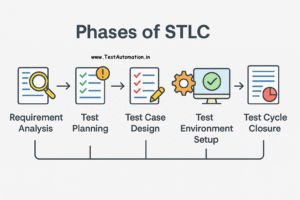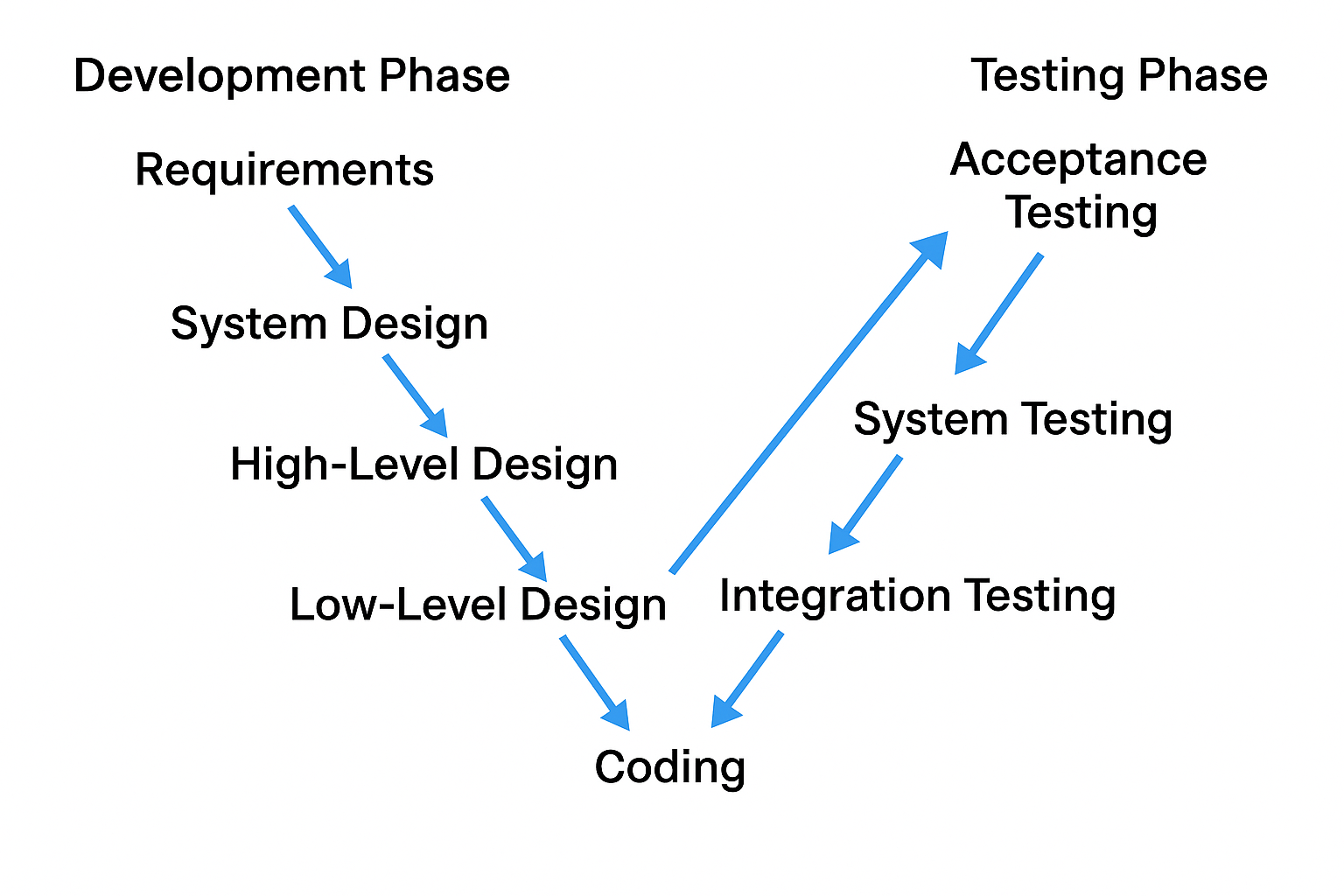Phases of STLCSo let’s start to learn the phases of the software testing lifecycle. The software testing lifecycle STLC

So let’s understand the above diagram. It has several phases of STLC, and those are as follows
Requirement Analysis –
This is the first step of the STLC process. Where testers understand the requirements to know how software should work/behave. Here tester understood both functional and non-functional requirements. Understanding sessions and question-answer sessions are conducted with a Business analyst to fill the gaps in understanding the requirements. Hence, this is an important phase.
Test Planning:
Test Planning is the Second stage, which comes after understanding the requirements. In this stage detailed test plan is being prepared. This is a test planning phase. All aspects of test planning are defined, like defines the strategy, objectives, timelines, required resources, and tools, as well as the roles and responsibilities of teams. This is an important stage in STLS as it defines the planning which allows the team and project to reach the goals
Test Case Design
This is the third stage in software testing, where a test case is designed. While designing test cases, the required expected criteria for functionality are taken into consideration. Techniques like boundary value analysis, equivalence partition etc, are used to cover all possible positive as well as negative test cases for the functionality. Test case review is also performed after designing of test case to confirm the understanding as well as the expected output from the test case. This step moves STLC one step ahead towards project planning & to start testing.
Test Environment Setup
This is the fourth stage of the software testing lifecycle STLC. Here environment setup is done. So, what exactly does the environment setup? So to do testing of software being developed, we need a production-like setup or environment where we can run expected test scenarios for both positive and negative. Testing software in a production-like environment gives us confidence about the performance of the software in production. Sometimes, test data and third-party software or environment also need to be set up. So even though we have done the first three stages perfectly. Without the Test environment setup, we can not start testing.
Test Execution
This is the fifth stage of the software testing lifecycle STLC. Here, test cases are executed with respect to the functionality delivered for testing. Here, each test case runs against the software functionality delivered, and the Actual result and the expected result are verified. If any mismatch between the actual result and the expected result, then the tester logs the bug. Bug will have details about the bug with steps to reproduce, actual expected result, environment details, screenshot, and log files for better analysis. Later bug gets fixed, and bug retest and regression testing are performed to verify bug is fixed and it did not impact any working part of any functionality.
Test cycle closure
This is the sixth and last stage of the software testing lifecycle STLC. Here, test results are analysed for passed, no run, not applicable, and failed test cases to know how well the functionality behaved. And to conclude that can we deliver software to the customer? Also, in retrospective meetings, testers can document lessons learned from the overall process of STLS to improve on future projects.
Conclusion
So, here now you understand the use and importance of STLC. It is a systematic approach to ensure software quality.
Learn more about Manaul Software testing Course tutorial Free



